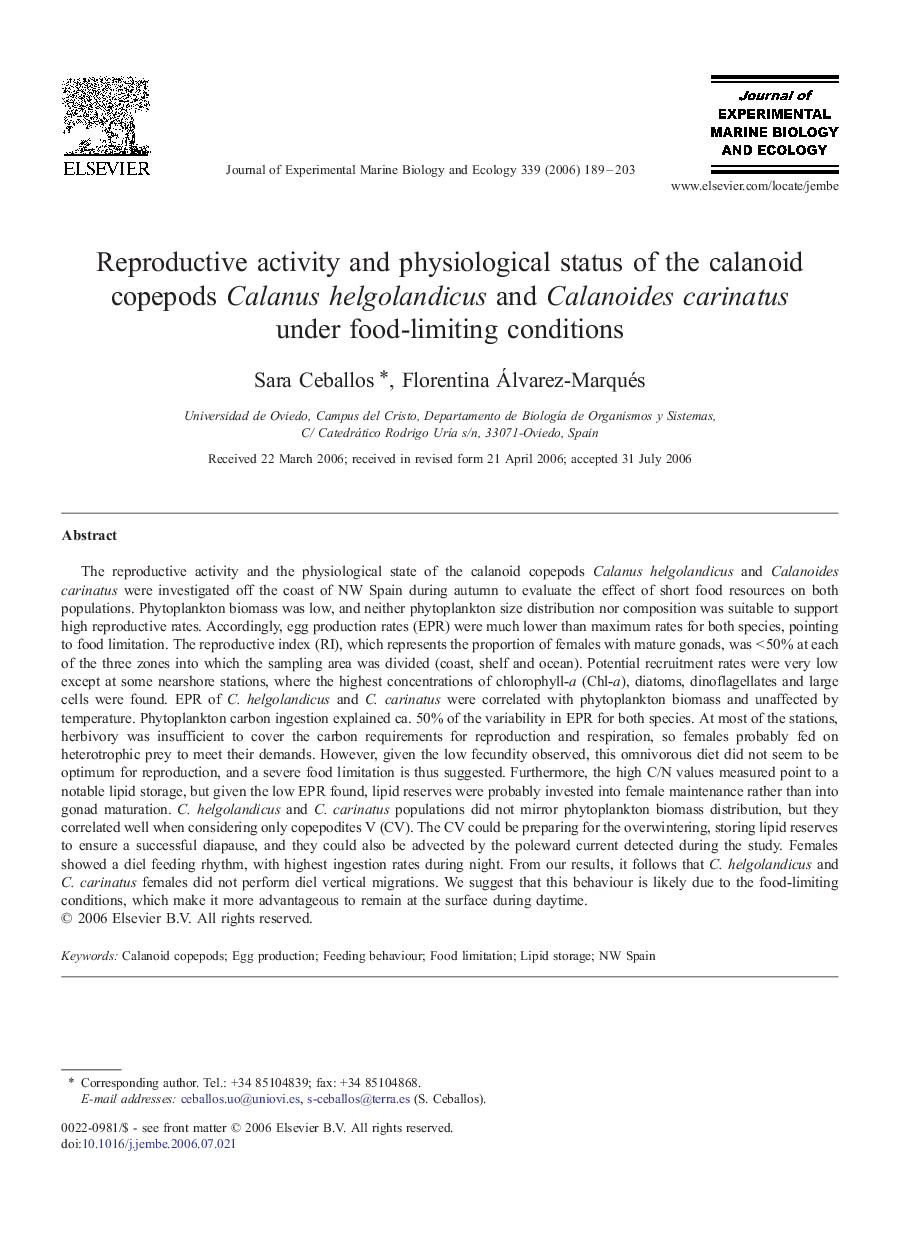| کد مقاله | کد نشریه | سال انتشار | مقاله انگلیسی | نسخه تمام متن |
|---|---|---|---|---|
| 4397923 | 1305914 | 2006 | 15 صفحه PDF | دانلود رایگان |

The reproductive activity and the physiological state of the calanoid copepods Calanus helgolandicus and Calanoides carinatus were investigated off the coast of NW Spain during autumn to evaluate the effect of short food resources on both populations. Phytoplankton biomass was low, and neither phytoplankton size distribution nor composition was suitable to support high reproductive rates. Accordingly, egg production rates (EPR) were much lower than maximum rates for both species, pointing to food limitation. The reproductive index (RI), which represents the proportion of females with mature gonads, was < 50% at each of the three zones into which the sampling area was divided (coast, shelf and ocean). Potential recruitment rates were very low except at some nearshore stations, where the highest concentrations of chlorophyll-a (Chl-a), diatoms, dinoflagellates and large cells were found. EPR of C. helgolandicus and C. carinatus were correlated with phytoplankton biomass and unaffected by temperature. Phytoplankton carbon ingestion explained ca. 50% of the variability in EPR for both species. At most of the stations, herbivory was insufficient to cover the carbon requirements for reproduction and respiration, so females probably fed on heterotrophic prey to meet their demands. However, given the low fecundity observed, this omnivorous diet did not seem to be optimum for reproduction, and a severe food limitation is thus suggested. Furthermore, the high C/N values measured point to a notable lipid storage, but given the low EPR found, lipid reserves were probably invested into female maintenance rather than into gonad maturation. C. helgolandicus and C. carinatus populations did not mirror phytoplankton biomass distribution, but they correlated well when considering only copepodites V (CV). The CV could be preparing for the overwintering, storing lipid reserves to ensure a successful diapause, and they could also be advected by the poleward current detected during the study. Females showed a diel feeding rhythm, with highest ingestion rates during night. From our results, it follows that C. helgolandicus and C. carinatus females did not perform diel vertical migrations. We suggest that this behaviour is likely due to the food-limiting conditions, which make it more advantageous to remain at the surface during daytime.
Journal: Journal of Experimental Marine Biology and Ecology - Volume 339, Issue 2, 12 December 2006, Pages 189–203